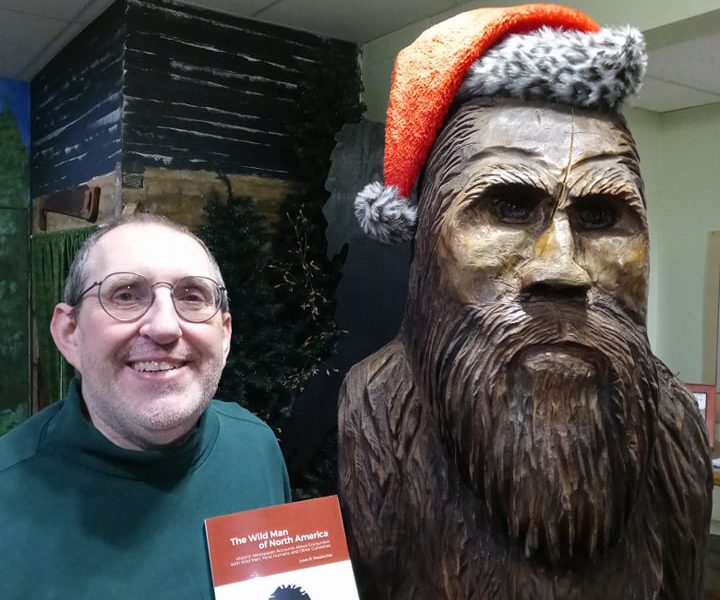A new book has been released by a resident of Braxton County which recounts the historic experiences people have had in North America with the “wild man,” or more commonly known today as Bigfoot.
Louis Petolicchio, of Sutton, who works with The West Virginia Bigfoot Museum, began to research the historical aspects of Bigfoot when he realized old newspaper accounts, some going back almost 200 years, had been reporting on large hairy creatures encountered in the mountains or woodlands of the continent. Those accounts have now been compiled into a single edition titled “The Wild Man of North America.”
“Newspapers from across the country were reporting on these odd experiences people were having running into some sort of animal, often when they were hunting, logging, or trapping,” Petolicchio said. “They did not understand what they were seeing and the best description they could come up with was to call it a ‘wild man’ because that was what made sense to them.”
Petolicchio said that many of the “wild man” accounts are consistent with what people in the remote forests and mountains report today: a large, hairy bipedal creature with immense strength.
“What we would call ‘Bigfoot’ today, they were calling a ‘wild man,’ which makes sense because the word ‘Bigfoot’ did not come into being until the 1950’s and the word ‘Sasquatch’ was not coined until the 1930’s,” he said. “But stories of these animals have been reported in American newspapers since almost the beginning of the country, some of which have been good and some of which have been hostile.”
Petolicchio noted that what he found intriguing was that after reviewing the newspaper reports he has concluded that there have actually been three different creatures encountered in the North America wilds. He said the first was Bigfoot, which is large, powerful, ape-like, generally reclusive but curious. The second, he said, would best be described as a “feral human” or someone who is hermit-like but will behave in an erratic and sometimes violent manner.
“It is the third group which I find the most curious,” he said. “I refer to them simple as a ‘Lost Hominid’ because I don’t know what else to call them.”
“According to the old newspaper accounts, they are large, hairy, powerful and they know how to use fire and often have primitive clothing, like animal pelts. They are also much more aggressive than Bigfoot, and some of the newspaper accounts describe them attacking people and horses and trying to carry off women.”
Petolicchio said the purpose of the book is not intended to resolve any debate as to whether Bigfoot exits, but to share the old newspaper accounts of what people had been experiencing from across the continent for the last couple of hundred years and allow readers to draw their own conclusions.
Copies of “The Wild Man of North America” are available at The West Virginia Bigfoot Museum in Sutton, or directly from the printer, Lulu.com.

